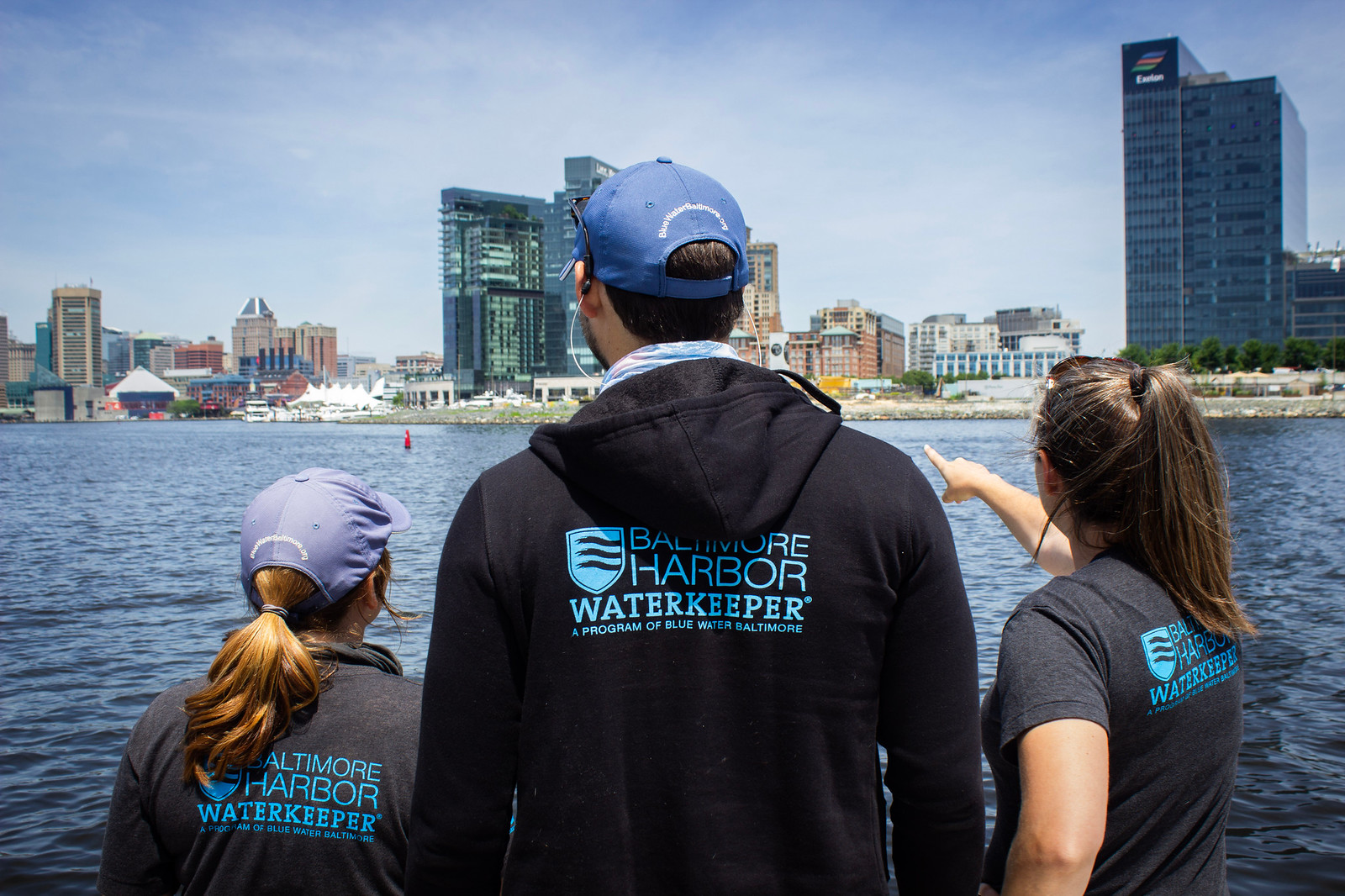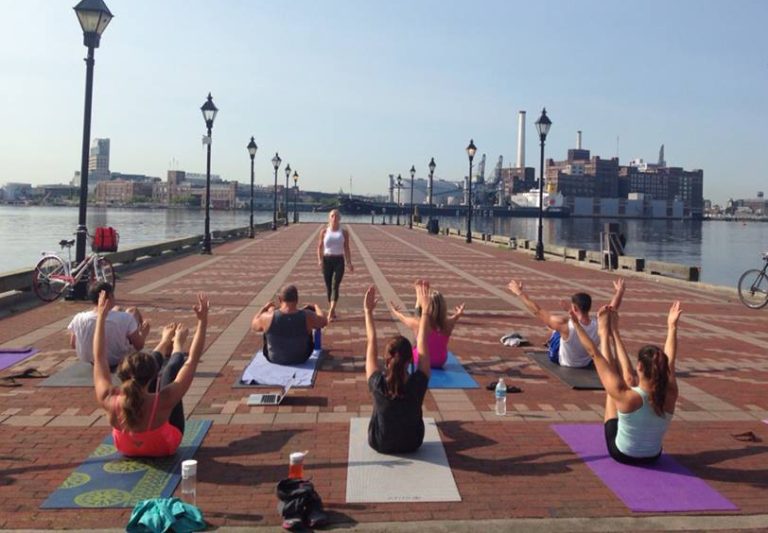PRESS RELEASE: Blue Water Baltimore Alerts MDE to Major Deficiencies at Baltimore’s Wastewater Treatment Plants
August 30, 2021
Contact
Alice Volpitta, Baltimore Harbor Waterkeeper with Blue Water Baltimore
(410) 236-9136
Blue Water Baltimore Alerts MDE to Major Deficiencies at Baltimore’s Wastewater Treatment Plants
Baltimore, MD – Blue Water Baltimore, home of the Baltimore Harbor Waterkeeper, has provided results of our ongoing water quality monitoring program to the Maryland Department of the Environment, leading to inspections and discovery of major violations at the Patapsco and Back River Wastewater Treatment Plants (WWTPs). These facilities service approximately 1.6 million people in the metropolitan area, including all of Baltimore City, major portions of Baltimore County, and some parts of Anne Arundel and Howard County. These WWTPs are pumping millions of gallons of partially untreated sewage into the Patapsco and Back Rivers every day due to significant operational and maintenance deficiencies. Without immediate corrective measures, the ongoing violations documented by the Maryland Department of the Environment (MDE) during recent inspections will continue at the Patapsco and Back River Plants, resulting in the discharge of excessive pollutants to the Patapsco River, Back River, and ultimately the mainstem of the Chesapeake Bay.
Blue Water Baltimore is fulfilling its watchdog role by sounding the alarm on these violations on behalf of the citizens being harmed by this ongoing pollution. There is a severe and worrying lack of accountability at the local, state, and federal levels. The serious concerns raised by our testing results are confirmed by MDE’s inspection reports and Baltimore City’s own self-reporting. As the two largest WWTPs in the state of Maryland, these facilities are irreversibly contributing massive amounts of pollution to the Patapsco and Back Rivers, and ultimately the Chesapeake Bay, resulting in untold harm to ecological and public health. As the operator of these WWTPs, Baltimore City has a critical obligation to bring these facilities into compliance in order to stop pollution and to achieve our goals of protecting and restoring these waterways.
As a result of our regular, comprehensive water quality monitoring program, Blue Water Baltimore (BWB) detected very high bacteria levels at the Patapsco WWTP effluent pipe on May 5, 2021. All of BWB’s data is available online at www.BaltimoreWaterWatch.org. Blue Water Baltimore alerted MDE to the concerning results that same day, leading MDE to discover numerous troubling violations during its inspection of the facility. The plant discharged pollution beyond their permitted limits from July 2020 through April 2021, and exceeded their permitted 2020 annual load limits for nitrogen and phosphorus. This impacts not only local water quality, but also impedes our ability to meet the interjurisdictional Chesapeake Bay Total Maximum Daily Load (“TMDL”), commonly known as a “pollution diet.” Additionally, the Patapsco Plant has failed to comply with a 2016 Consent Order aimed at eliminating the illegal discharge of Fats, Oils, and Greases (FOG) into the Patapsco River. That Consent Order was brought after Blue Water Baltimore extensively documented FOG discharges at the Patapsco WWTP effluent pipe from 2013-2015. Other associated reporting violations at Patapsco WWTP date back to at least 2018, and MDE documented significant operations and maintenance deficiencies throughout the Plant.
MDE’s findings at Patapsco WWTP prompted an inspection of the Back River WWTP, which is also owned and operated by Baltimore City. MDE discovered that Back River WWTP is also chronically polluting local waterways beyond the scope of its permit, and there are severe operational and maintenance deficiencies at the Plant. Maryland State law authorizes MDE to assess penalties up to $10,000 per day for these violations.
Baltimore City’s ability to meet federal Clean Water Act standards and successfully end sewage overflows & backups into local waterways and homes depends upon adequate functioning of these WWTPs. The Chesapeake Bay TMDL, designed to restore water quality in the Bay, also relies upon the success of the Enhanced Nitrogen Removal upgrades at both the Patapsco and Back River WWTPs. But now the success of that multi-state agreement is in jeopardy because of the excessive pollution being discharged from these WWTPs.
Blue Water Baltimore has serious concerns about Baltimore City’s ability to adequately operate these critical facilities in compliance with state and federal environmental laws and standards. The lack of oversight for significant periods of time by MDE and EPA – the regulatory agencies responsible for safeguarding our local waterways – is also troubling. These are not problems that can be resolved in a matter of weeks. In MDE’s estimation, the FOG-related problems at the Patapsco WWTP require an engineering fix which will likely require significant time and resources to implement. We appreciate that MDE is now taking further action, but the findings outlined in MDE’s inspection reports, coupled with BWB’s long history of documenting these violations, indicate that there are systemic problems causing serious operational failures at these facilities.
There are clear steps that must be taken immediately to protect our local waterways and the people who fish, swim, boat, and otherwise recreate in and around them. Baltimore City must complete the work mandated in the 2016 FOG Consent Order, and systemic problems must be addressed at both WWTPs. MDE must rigorously enforce the terms of the permits under which these facilities operate, and there must be increased oversight given the negligence on display. Blue Water Baltimore will continue tracking progress and collecting water quality samples, proving yet again how crucial our watchdog role is.
# # #
Blue Water Baltimore, home of the Baltimore Harbor Waterkeeper, is a local 501(c)(3) nonprofit watershed organization with a mission to restore the quality of Baltimore’s rivers, streams, and Harbor to foster a healthy environment, a strong economy, and thriving communities. Click here to sign up for future advocacy alerts.



